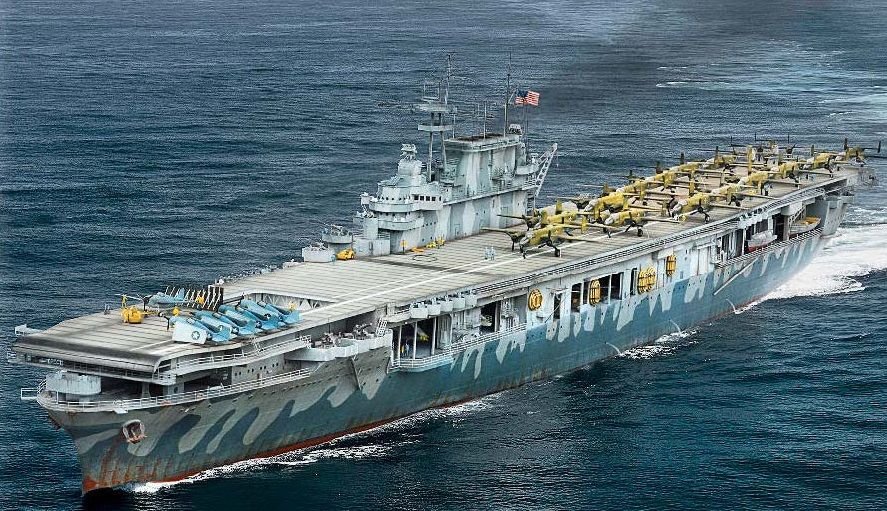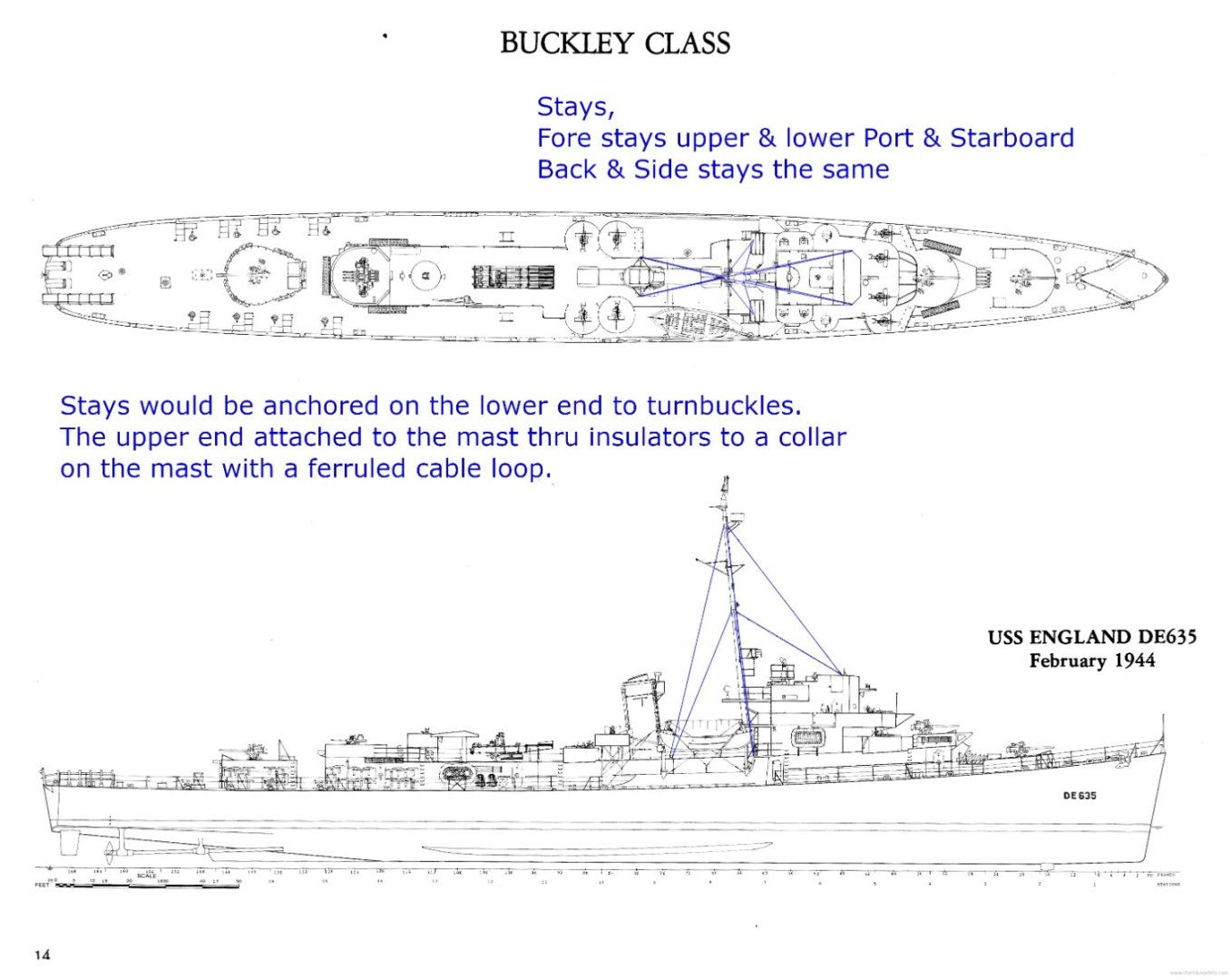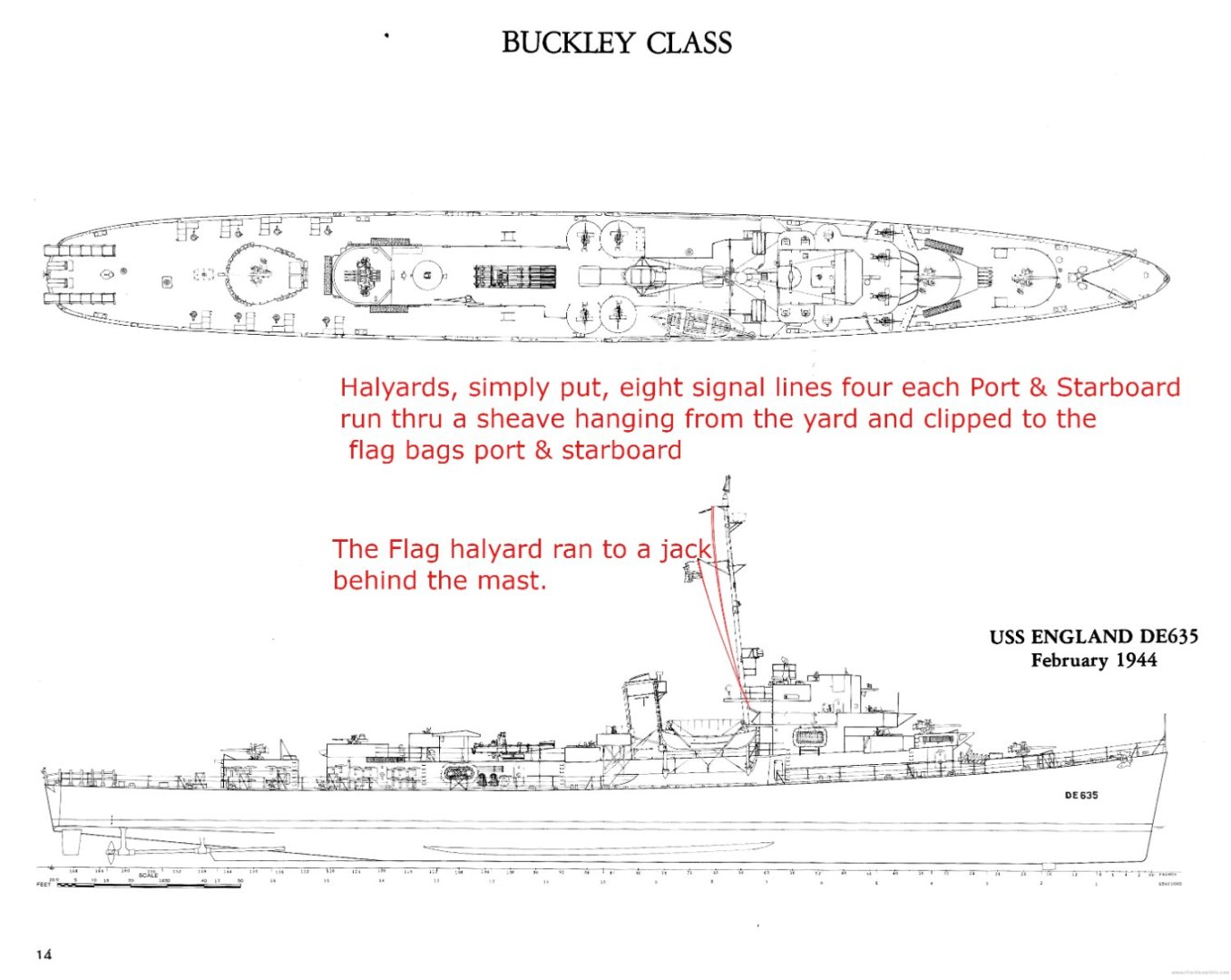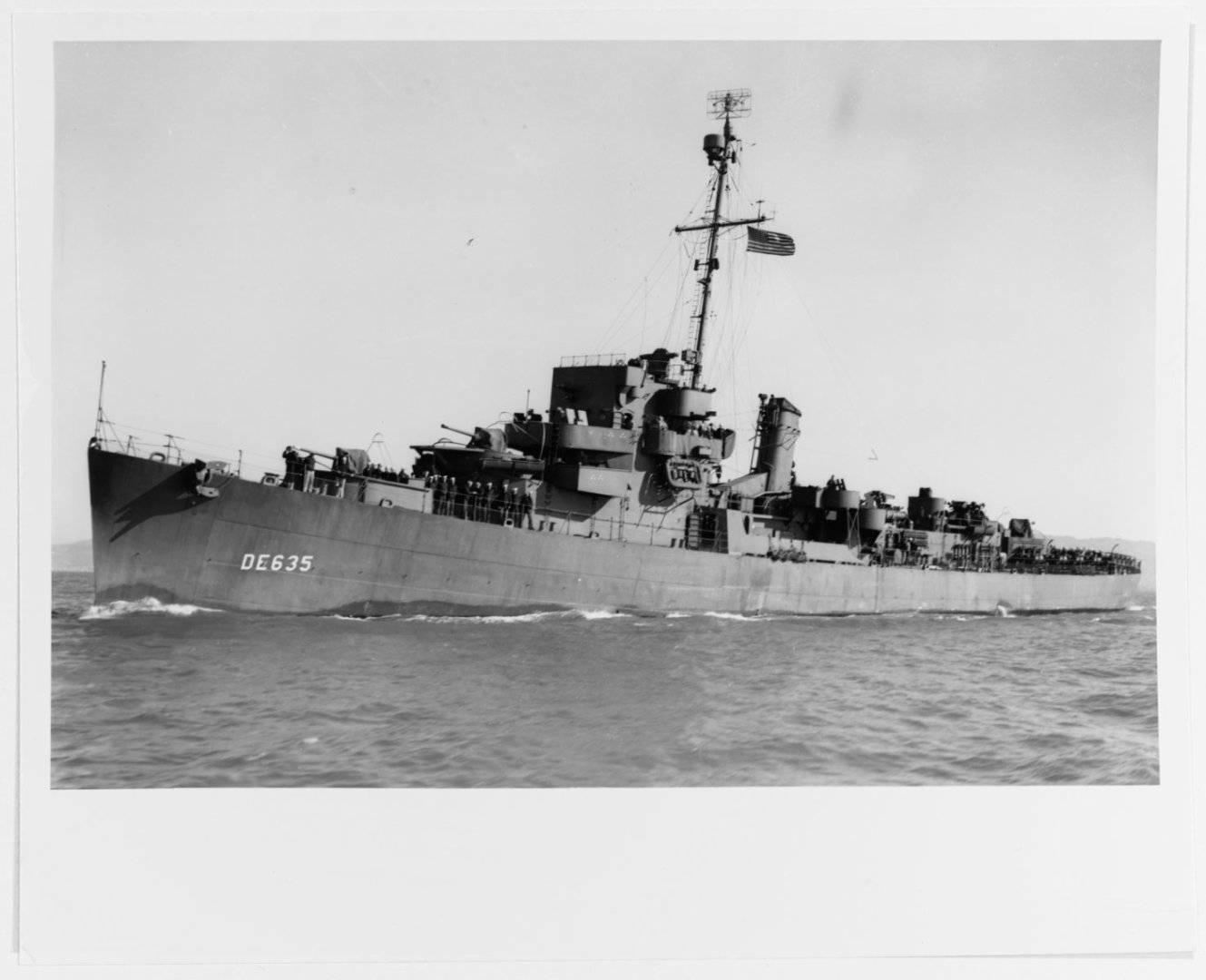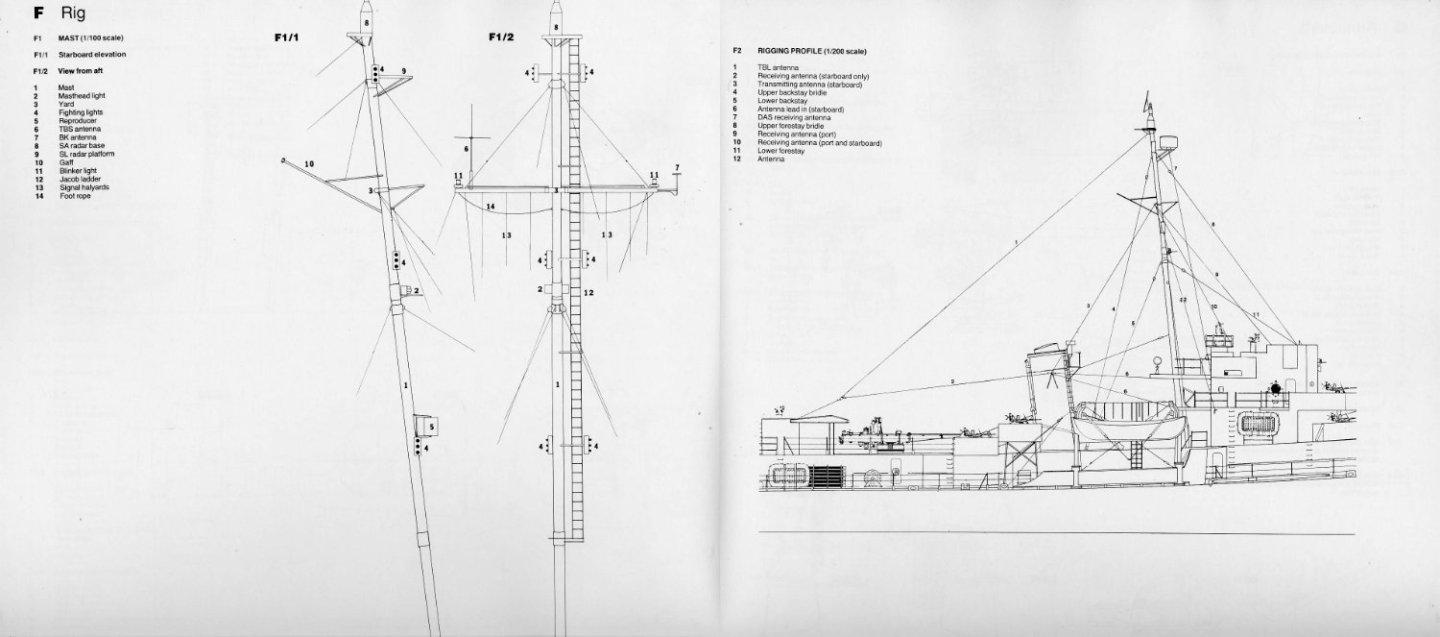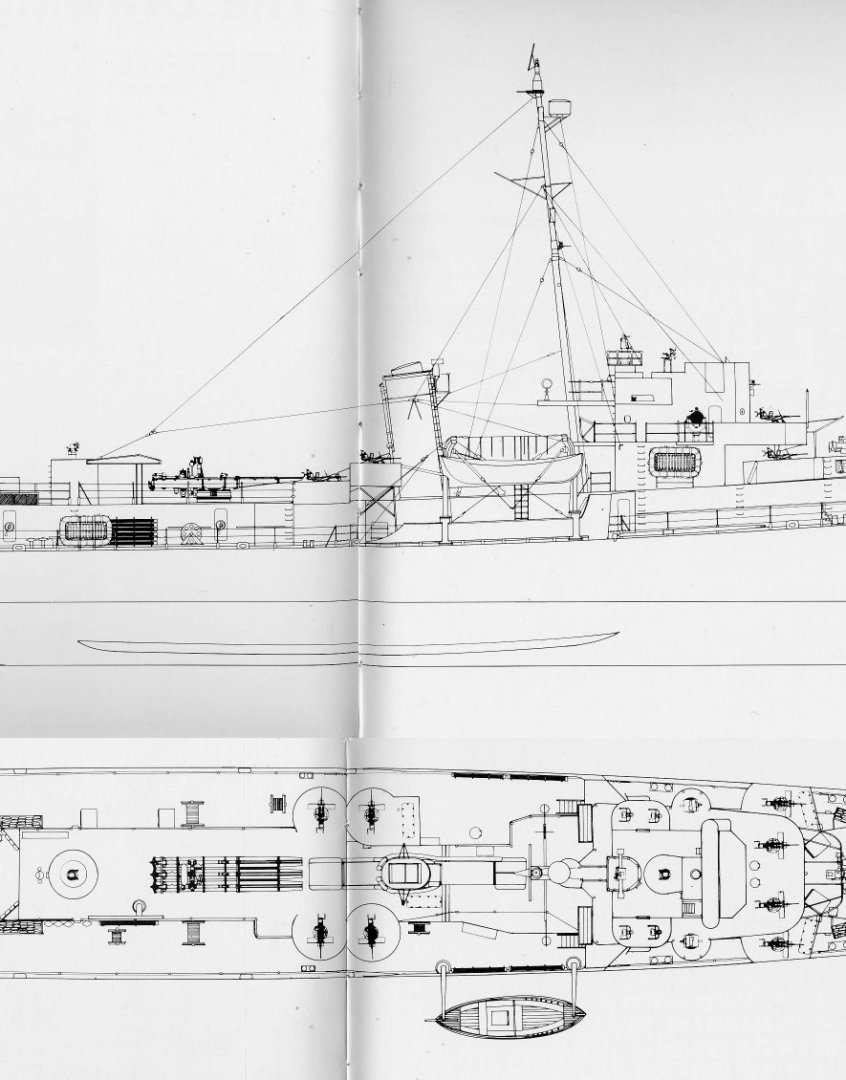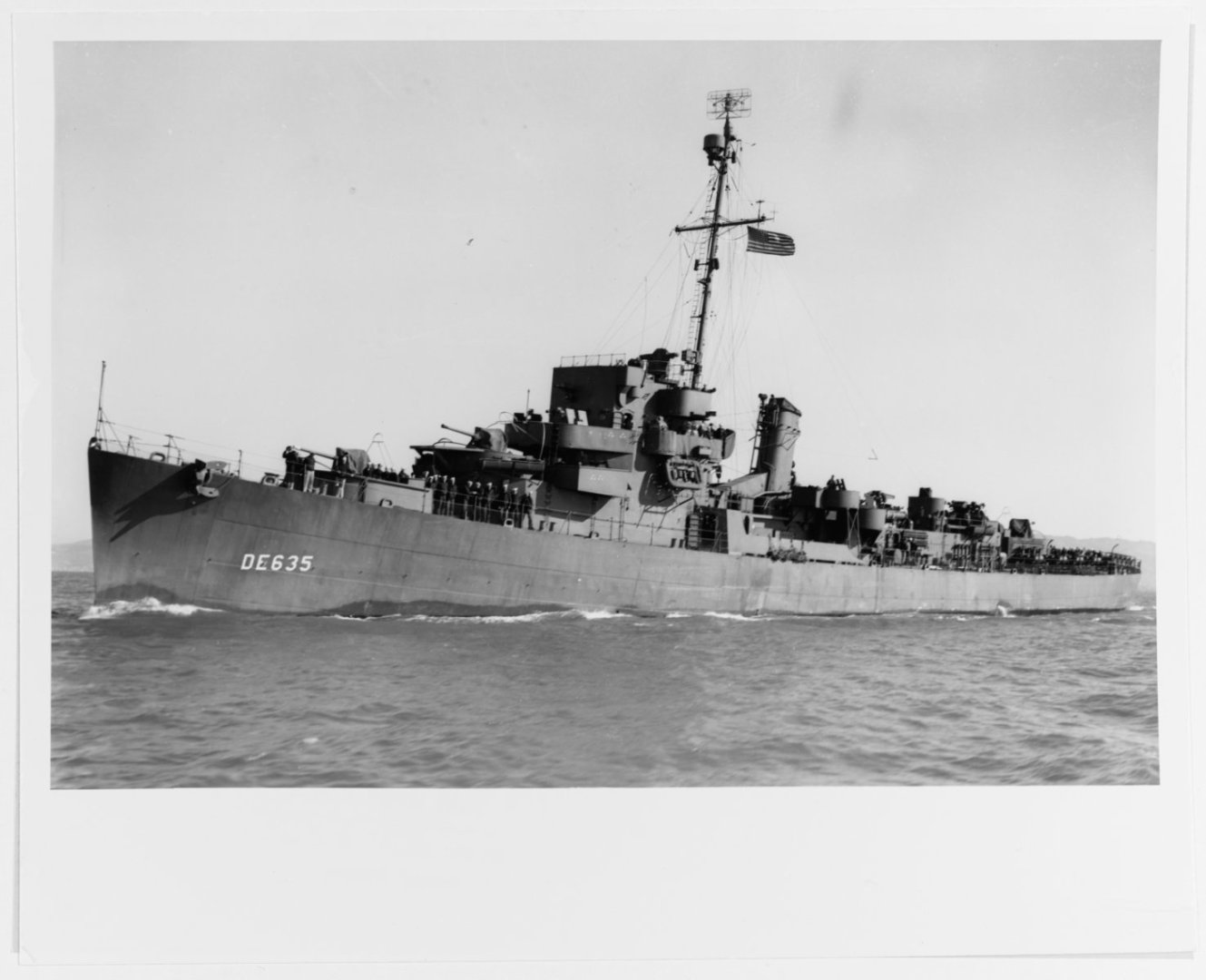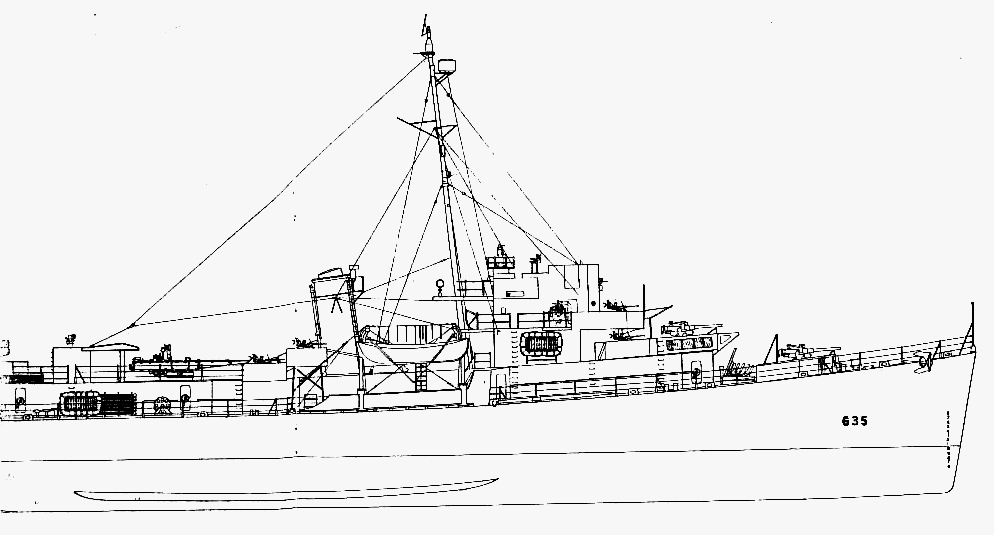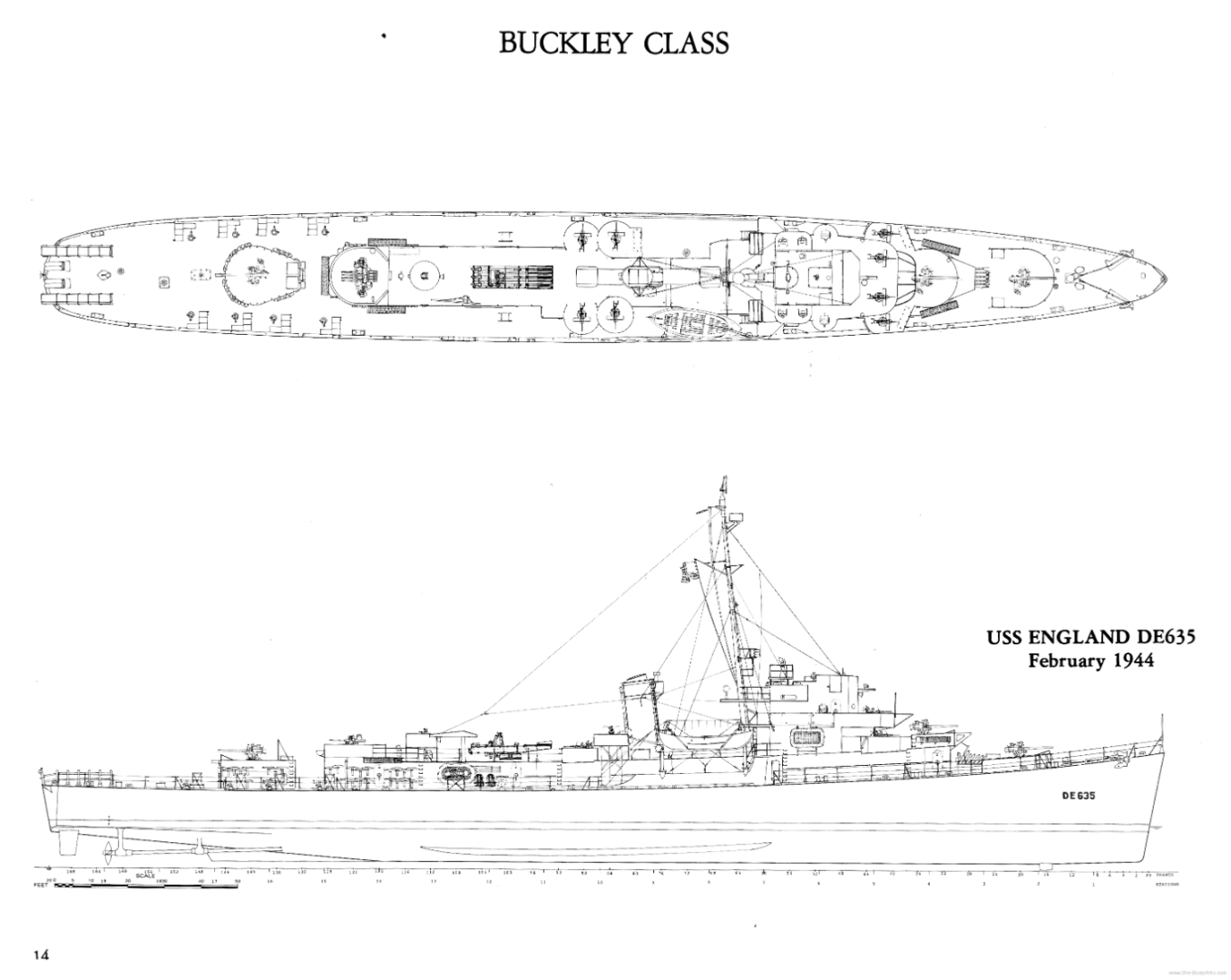-
Posts
4,364 -
Joined
-
Last visited
Content Type
Profiles
Forums
Gallery
Events
Everything posted by Egilman
-
Try this one, you can ask if he can print it at 1-/250... as it is 1/240 won't show much difference... (he does do a 1/350 1.1 mount so it shouldn't be an issue...
-
Ok Brother... I promised some drawings.... The stays are fairly simple... The Aft stays anchor to the first superstructure deck level one just forward of the stack port & starboard... The Forward stays anchor to either side of the bridge level just aft the corner poet & starboard... The side stays also anchor to the O1 level coaming edge in line with the mast port & starboard... Halyards... Halyards are self explanatory, some ships had three P&S other had four P&S.... The Flag halyard ran from the inner corner of the flag left flag bag to the jib centered on the mast... The jib was supported by a block and tackle tied off to a cleat on the mast.... And of course they were only tight when there were no flags attached..... Now the antennas.... There are a lot of them, difficult to follow hard to see in pics... I'm still working on the chart for them but I will post the pics I have to give you a sense of them... For example... The attached pics are similar, from the US Navy Archives , High res Tiff files (about 30 meg in size each) When I get the chart of the antennas finished I'll post it my friend.... 19-N-60938.tiff 19-N-60939.tiff 19-N-60940.tiff 19-N-60941.tiff 19-N-60942.tiff 80-G-336947.tiff
-
His actual quote, written in a personal letter in a May 1865 Letter to James E. Yeatman was this... The War is Hell quote comes from 1879 in his address to the graduating class at the Michigan Military Academy..... There are many variations to them recited over the years and they are sometimes conflated together... Lest we forget....
-
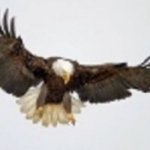
T Rex 36in (90cm) long Skeleton - Finished
Egilman replied to Old Collingwood's topic in Non-ship/categorised builds
No biggie brother... the admiral wanted to see it assembled so I threw it together... No glue, I'll get back to it when time allows and do a better job of it... So she is sitting on top of the cabinet looking all intimidating... {chuckle} and yes it is large.... Yours is looking very nice brother and the velociraptor will be a nice comparison piece... EG -
Yes, written by Al Ross.. #17 in the AOTS series.... I'll take a look at it and see if there is some useful info, there should be... {chuckle} Update: Here is what they got as far as drawings.... These should help explain some of it, at least make it clearer.... (I will still separate the different lines using the other drawings I posted.... (it's easier to erase lines than create them) Give me a bit...
-
What I'm going to do brother is take the lower drawing and using images from the navy, create three drawings, 1 each showing the Standing, Running and Antenna rigging.... In essence removing all the complicated crossovers and highlighting them in color.... If you think that would help...
-

T Rex 36in (90cm) long Skeleton - Finished
Egilman replied to Old Collingwood's topic in Non-ship/categorised builds
Mine is going to sit on the tall storage cabinet looking at the door.... {chuckle} -

F-4G Phantom II Wild Weasel V by CDW - Zoukei Mura - 1:48 scale
Egilman replied to CDW's topic in Non-ship/categorised builds
That Euro I scheme is a pretty one isn't it? I'm in.... -
I have some, and there should be some detail images on the USS Slater's website... That drawing is just the Standing and Radios, the running rigging is absent the guys are the ones with the insulators... Update: This one has the running rigging...
-
Would reference images be of any help? the usual procedure and order is usually Standing, Running & radio aerials.... Standing usually is painted ships color, Running, (flag halyards) is hemp or jute and aerials are usually bare metal (aluminum or steel) in US navy practice....
-

F4U-1A Corsair by DocRob - FINISHED - Tamiya - 1/32
Egilman replied to DocRob's topic in Non-ship/categorised builds
Just a note brother, most peeps don't have a clue what the wheel well colors were and it's not easy to see once the model is built, heck it's hard to see on the real aircraft... The Navy very quickly went to gloss white and have been that way ever since... (the even retro painted all the existing aircraft wheel wells as well) Same goes for the interior panels, the salmon color is next to impossible to see on the real aircraft unless you start breaking it down into it's subassemblies... You don't have to put any of it on the bird and be completely authentic... There is a story behind the salmon colored chromate though... It was a second layer of chromate over the ZC yellow chromate Vought aircraft normally used... The reason for it was in the early deliveries the corrosion protection was poorly applied... The navy mandated that a second coat be applied to all future deliveries, and, to make sure, the second coat was tinted with red lead.... Hence the "Salmon" color was a mix of Yellow Zinc Chromate with a highly thinned red lead..... As deliveries continued somewhere during mid '43, the requirement for double coating went away and so did the red lead "Salmon" color afterwards being mostly Yellow ZC.... All the dash A's and about 2/3rds of the -A1's got the salmon color... And they all had white wheel wells eventually.... On a live aircraft your never going to see it, I'm sorry I brought it up. Your work is exquisite, better than I could do.... -

F4U-1A Corsair by DocRob - FINISHED - Tamiya - 1/32
Egilman replied to DocRob's topic in Non-ship/categorised builds
My pleasure Rob, You'll find that what info on models and modeling we have around here is freely shared, it's the best modeling site on the net... Thanks Ken.... Thank you brother, I have a 1/32 Revell in the stash as well, still in that brittle blue styrene... (ancient) it is a beautiful airplane as well... Like a Phantom II, you can't build just one.... One more piece of info, the interior color on the 1's and 1A's was salmon, the cockpit was interior green, but the rest was pink... Except for the inside of the Gear Doors, they were shiny white, the navy didn't start painting the wheel well interiors white until late late '43, early '44 so for an early 1A Guadalcanal build, the wheel wells & cowl interiors would be salmon colored... There's pics up on the site here in Edwards build showing it... -

F-86F-30 Sabre by Egilman - Kinetic - 1/32nd scale
Egilman replied to Egilman's topic in Non-ship/categorised builds
Just can't leave her out in the cold.... She's at that point where her school friends have just about disappeared and she's adjusting to the realities of living life on her own... her foster parents/schools didn't teach her much of that... But she is teachable, at least when she isn't glued to the electronics... Just leave enough room for it to land my friend, parking it won't be the problem... {chuckle} she isn't much bigger than a P-51 or P-47 and smaller than a P-38... -

F-86F-30 Sabre by Egilman - Kinetic - 1/32nd scale
Egilman replied to Egilman's topic in Non-ship/categorised builds
I'm familiar with ground flocking, it's just been so long since I've done any that my skills are probably a bit rusty... Thanks my friend... -

F-86F-30 Sabre by Egilman - Kinetic - 1/32nd scale
Egilman replied to Egilman's topic in Non-ship/categorised builds
You still have a 5 decade jump on me brother... {chuckle} -

F4U-1A Corsair by DocRob - FINISHED - Tamiya - 1/32
Egilman replied to DocRob's topic in Non-ship/categorised builds
Oh yeah, the Revell kit requires a lot of work to bring it up to today's offerings... You can buy a dozen old revell corsairs for the price of the required aftermarket..... -

F4U-1A Corsair by DocRob - FINISHED - Tamiya - 1/32
Egilman replied to DocRob's topic in Non-ship/categorised builds
Your adding 36 sparkplugs to the engine? that's a seldom seen level of detail my friend... MAD SKILLZ!!! (each cylinder had 2 sparkplugs) so yes the thread for the plug wires are 2x too large... The air ducting around the cylinders is a nice touch shame it's not there as well... Good looking casting though, maybe they thought the ducts were too much.... As far as the wings? the only time they were folded is when they were on a carrier deck either being spotted after landing or just before launch.... Marine birds on a land base were never folded.... The whole one wing up and one out is a modelers presentation, I imagine to show the detail of the fold mechanism and preserve space in a display... VMF units on a carrier would have the benefit of the Navy's hanger deck personnel and procedures, they would never be allowed to get grungy.... The Marines on Guadalcanal, their first corsairs were hand me downs from the Navy after the Navy decided they weren't good carrier aircraft... (too difficult to successfully land consistently, it was actually the British in 1944 who devised a landing pattern to allow the Corsair to successfully land on a carrier deck consistently) The US Navy changed their landing ops approach patterns after being advised by the Royal Navy on it, it became a great carrier based aircraft after that... On a carrier deck they were always folded, on land, never folded.... The wing folding mechanism was compound, when activated, both sides folded at the same time.... You would never see one up and one down on a real aircraft... Not being a rivet counter brother, just advising on the actual practice... One up/one down is a good presentation for limited space displays... Go with it if the muse tells you to.... It won't detract at all from the build..
About us
Modelshipworld - Advancing Ship Modeling through Research
SSL Secured
Your security is important for us so this Website is SSL-Secured
NRG Mailing Address
Nautical Research Guild
237 South Lincoln Street
Westmont IL, 60559-1917
Model Ship World ® and the MSW logo are Registered Trademarks, and belong to the Nautical Research Guild (United States Patent and Trademark Office: No. 6,929,264 & No. 6,929,274, registered Dec. 20, 2022)
Helpful Links
About the NRG
If you enjoy building ship models that are historically accurate as well as beautiful, then The Nautical Research Guild (NRG) is just right for you.
The Guild is a non-profit educational organization whose mission is to “Advance Ship Modeling Through Research”. We provide support to our members in their efforts to raise the quality of their model ships.
The Nautical Research Guild has published our world-renowned quarterly magazine, The Nautical Research Journal, since 1955. The pages of the Journal are full of articles by accomplished ship modelers who show you how they create those exquisite details on their models, and by maritime historians who show you the correct details to build. The Journal is available in both print and digital editions. Go to the NRG web site (www.thenrg.org) to download a complimentary digital copy of the Journal. The NRG also publishes plan sets, books and compilations of back issues of the Journal and the former Ships in Scale and Model Ship Builder magazines.

